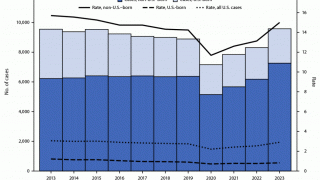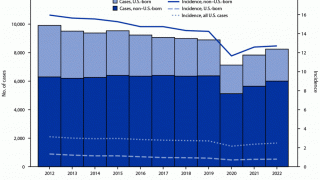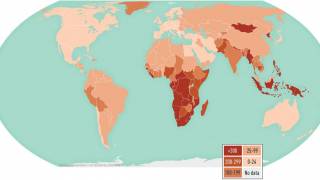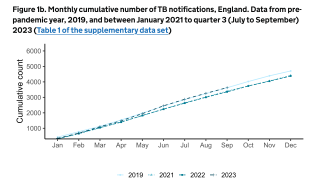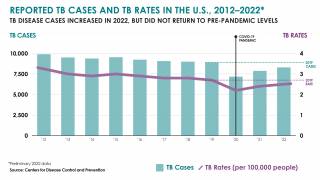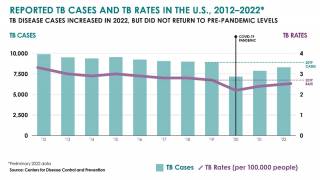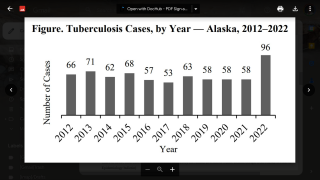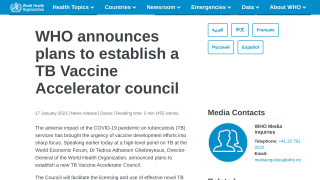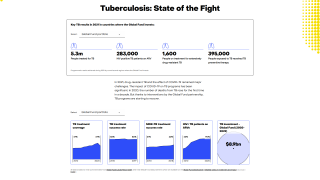Did COVID-19 Hide or Reduce Tuberculosis Cases?

The U.S. Centers for Disease Control and Prevention (CDC) published early release research (Volume 28, Number 4—April 2022) that used Tuberculosis (TB) medication dispensing data to unmask actual TB case rates during the COVID-19 pandemic.
This innovative study analyzed a pharmacy dataset to assess the decline in TB cases reported to the US National Tuberculosis Surveillance System (NTSS) in 2020 and compared it with the average number of cases.
Before 2020, TB incidence decreased 2%–3% annually during the previous ten years.
These CDC researchers found 26.7% fewer TB-related prescriptions and cases in 2020.
This decrease was considerable during April–May 2020.
Additionally, they found a strong correlation at the national level between NTSS case counts and isoniazid and pyrazinamide IQVIA projected patient counts, suggesting that isoniazid and pyrazinamide prescription data can serve as a proxy for trends in TB cases.
In contrast, NTSS case counts and azithromycin (an antibiotic often used to treat chest infections such as pneumonia but not used for TB treatment) had a negative correlation, smaller in magnitude than isoniazid and pyrazinamide correlations.
This finding suggests that this relationship is not being driven by general antibiotic prescriptions for respiratory diseases and supports the idea that the isoniazid and pyrazinamide relationship is specific to TB.
In contrast, pyrazinamide, isoniazid, and azithromycin had a strong state correlation, suggesting that the state relationship might be driven more by population than by the number of TB cases.
Differences between isoniazid and pyrazinamide prescriptions might be explained because isoniazid is prescribed for both latent TB infection (LTBI) and TB disease.
In contrast, pyrazinamide is prescribed only for TB disease and is generally used for only two months of disease treatment (as opposed to 6 months for isoniazid).
For example, 2020 pyrazinamide counts were within prediction intervals from 2020 NTSS counts, whereas isoniazid counts were lower.
This finding hints at a decline in LTBI treatment as well.
However, the significant decrease in 2020 compared with 2019, especially in April and May, was not specific to isoniazid and pyrazinamide; it was also seen in the overall database and in azithromycin prescriptions, indicating a general decline in the number of medications dispensed in 2020.
As of March 17, 2022, the BCG vaccine, which has several versions, is commonly used worldwide to prevent TB in about 100 million people annually, states the WHO.
Note: This news post edited the CDC report for clarity and curated it for mobile readers.
Our Trust Standards: Medical Advisory Committee

